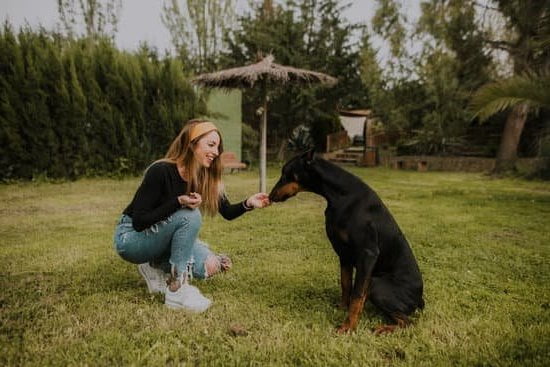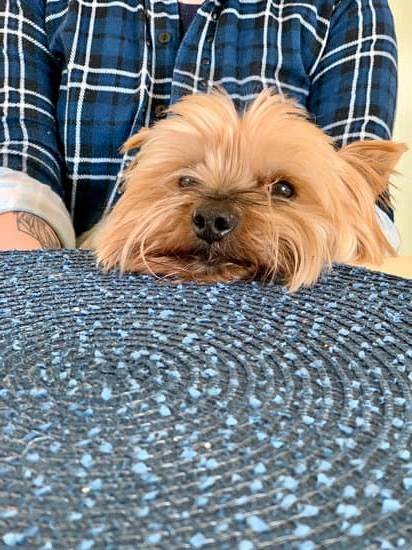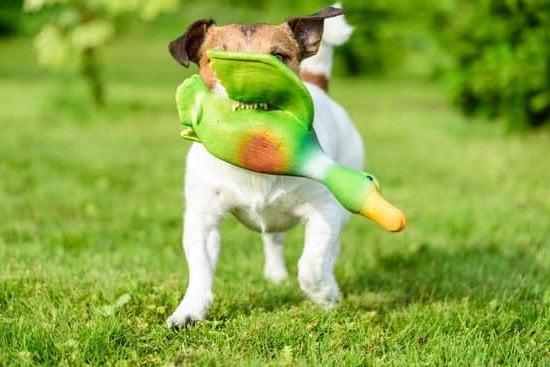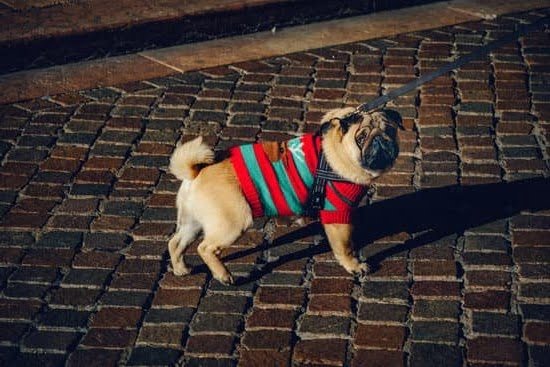Having a dog that consistently pees indoors can be frustrating and inconvenient. From ruined carpets to unpleasant odors, dealing with pee accidents can disrupt your daily life and affect your living space. This is why training dogs to avoid peeing inside the house is crucial in having a well-behaved pet.
Proper dog training not only prevents indoor accidents but also promotes a harmonious relationship between you and your furry friend. It establishes clear boundaries and expectations, resulting in a happier and healthier environment for both of you. By investing time and patience in training, you can teach your dog the appropriate behaviors and habits necessary for them to hold their bladder until they are outside.
In this article, we will explore the importance of proper dog training when it comes to handling pee accidents. We will discuss common reasons why dogs pee indoors, the significance of establishing a consistent routine, positive reinforcement techniques, crate training as a valuable tool, recognizing signs of an impending accident, vigilance and supervision, troubleshooting challenges, and the key ingredients – consistency and patience – for long-term success.
By understanding the fundamentals of dog training and implementing effective strategies, you can transform your home into a pee-free haven while building a strong bond with your furry companion. So let’s dive into the essential aspects of training your dog not to pee indoors.
Common Reasons Dogs Pee Indoors
Anxiety as a Possible Trigger
One common reason why dogs may urinate indoors is anxiety. Just like humans, dogs can experience anxiety which can lead to accidents inside the house. Some common causes of anxiety in dogs include changes in the household, separation from their owners, or exposure to new environments or situations.
When a dog is anxious, it may lose control of its bladder and urinate indoors as a result. It’s essential for pet owners to understand and address any underlying anxiety issues their dog may have in order to successfully train them not to pee indoors.
Lack of Proper Training
Another possible reason for dogs peeing indoors is simply a lack of proper training. Dogs need to be taught where and when it is appropriate to go to the bathroom. Without consistent and effective training, dogs may not understand that they should only eliminate outdoors. This lack of understanding can result in accidents inside the house. In these cases, it’s important for pet owners to focus on providing clear guidance and training their dogs properly.
Health Issues
Sometimes, health issues can cause dogs to urinate indoors. Medical conditions such as urinary tract infections, bladder stones, or diabetes can all contribute to accidents inside the house. If a previously well-trained dog suddenly starts having accidents, it’s crucial for pet owners to consult with a veterinarian. Identifying and treating any underlying health issues will not only improve the dog’s overall quality of life but also help prevent future indoor accidents.
Identifying the underlying reasons behind a dog’s urge to urinate indoors is an important step towards successfully training them not to do so. Whether it’s anxiety, lack of training, or health issues, addressing these underlying causes will greatly increase the chances of success in discouraging indoor peeing behavior.
Establishing a Consistent Routine
One of the crucial aspects of training a dog to not pee indoors is establishing a consistent routine. Dogs thrive on routine and predictability, so setting up a structured schedule can greatly aid in housebreaking. By following a regular feeding, walking, and bathroom routine, you can encourage your dog to hold their bladder until appropriate outdoor times. Consistency is key in ensuring that your dog understands when and where they are supposed to eliminate.
Creating a consistent routine starts with establishing set meal times for your dog. This allows you to predict when they will need to use the bathroom after eating. Make sure to take your dog out for a walk or potty break shortly after their mealtime. This helps stimulate their digestive system and prompts them to eliminate outside rather than inside your home.
In addition to regular meals, it is important to establish specific and frequent bathroom breaks throughout the day. Take your dog outside on a leash every few hours, especially after waking up from naps or spending time indoors for an extended period. By consistently reinforcing outdoor elimination during these scheduled breaks, you are helping your dog understand that this is the expected behavior.
| Activity | Frequency |
|---|---|
| Feeding | 2-3 times per day at set times |
| Potty Breaks/Walks | Every 2-3 hours during waking hours |
| Before Sleep | A final potty break before bedtime |
Remember, consistency is key in successful dog training. Stick to the established routine as much as possible and be patient with your dog as they learn what is expected of them. By creating a predictable schedule, you are setting your dog up for success in learning to hold their bladder and avoiding indoor accidents.
Positive Reinforcement Techniques
The Power of Positive Reinforcement
Positive reinforcement is a highly effective technique for training dogs to not pee indoors. This method focuses on rewarding desired behaviors rather than punishing or scolding dogs for accidents. By using positive reinforcement, pet owners can create a positive association with going to the bathroom outside and encourage their dogs to continue this behavior.
Examples of Positive Reinforcement
There are various ways to apply positive reinforcement when training a dog not to pee indoors. One of the most common methods is providing treats as a reward. Whenever your dog eliminates outside, immediately praise them and offer them a treat. This reinforces the idea that going potty outside leads to enjoyable rewards.
In addition to treats, verbal praise and affectionate gestures also play an essential role in positive reinforcement. Dogs thrive on human attention and affection, so verbalizing your approval and showering them with love when they do what you want reinforces the desired behavior.
Engaging in playtime with your dog after they eliminate outdoors is another way to positively reinforce good habits. This extra attention reinforces the link between appropriate bathroom behavior and enjoyable activities, making your dog more motivated to repeat these actions.
Consistency is Key
To maximize the effectiveness of positive reinforcement techniques, it is crucial to be consistent in rewarding your dog for eliminating outdoors. Consistency helps reinforce the desired behavior and ensures that your dog understands what they are being rewarded for.
Remember that timing is important when using positive reinforcement. Provide treats, praise, or playtime immediately after your dog finishes eliminating outside, so they can make the connection between their action and the reward. Delaying rewards may confuse your dog or cause them to associate the reward with something else entirely.
By consistently applying positive reinforcement techniques, pet owners can effectively train their dogs not to pee indoors while creating a strong bond based on trust and encouragement between themselves and their furry companions.
Implementing Crate Training
Crate training is a valuable tool for housebreaking your dog and preventing indoor accidents. It can be especially effective for puppies and dogs that are not yet fully potty trained. The concept behind crate training is to provide a small, comfortable space for your dog to relax in when they are unable to be supervised. By using the crate as a safe and secure area, you can teach your dog bladder control and establish a routine for bathroom breaks.
To start crate training, it’s important to choose the right crate size for your dog. The crate should be large enough for them to stand up, turn around, and lie down comfortably. If the crate is too big, it may tempt your dog to use one corner as a bathroom area. Once you have the appropriate sized crate, make it inviting by placing their bed or blanket inside along with some toys or treats.
Gradually introduce your dog to the crate by leaving the door open and allowing them to explore it at their own pace. Encourage them with positive reinforcement like treats or praise whenever they enter or spend time inside the crate voluntarily.
Once they are comfortable being inside with the door open, you can begin closing the door for short periods of time while you are present. Gradually increase the length of time they stay inside until they are able to comfortably stay in the crate for several hours without distress.
It’s important not to use the crate as a form of punishment or isolation. The goal is for your dog to view their crate as a safe and cozy den rather than a negative experience. Additionally, never leave your dog in their crate for extended periods of time without opportunities for bathroom breaks and exercise.
| Steps | Description |
|---|---|
| Choose the right crate size | Select a crate that allows your dog to stand, turn around, and lie down comfortably |
| Make the crate inviting | Add their bed or blanket along with toys or treats to make the crate a comfortable space |
| Introduce gradually | Allow your dog to explore the crate with the door open, then close it for short periods while you are present |
| Avoid using the crate as punishment | The crate should be associated with positive experiences, not negative ones |
| Never leave for extended periods without breaks and exercise | Your dog should have regular bathroom breaks and opportunities for physical activity outside of the crate |
Recognizing the Signs of an Impending Accident
One of the key aspects of successfully training a dog to not pee indoors is being able to recognize the signs that an accident is about to happen. By identifying these subtle cues early on, you can redirect your dog to an appropriate bathroom area and prevent any indoor accidents. Here are some tips on how to recognize these signs and intervene effectively:
- Sniffing and Circling: Dogs often have specific behaviors they display right before they need to relieve themselves. Sniffing the ground or circling a particular spot can indicate that they are searching for a suitable place to pee. If you notice your dog exhibiting these behaviors indoors, calmly interrupt them and guide them outside or to their designated bathroom area.
- Restlessness or Pacing: Another sign that your dog may need to go outside is restlessness or pacing. If you observe your dog wandering around aimlessly, unable to settle down, it could be a signal that they are trying to hold their bladder but cannot do so for much longer. Take this opportunity to immediately lead them outside for a bathroom break.
- Whining or Pawing at the Door: Some dogs may exhibit anxious behaviors when they need to eliminate, such as whining or pawing at the door. If your dog starts displaying these signs, it’s crucial not to ignore them or dismiss them as attention-seeking behavior. Respond promptly by allowing your dog access to their designated outdoor bathroom space.
It’s important to keep in mind that every dog is different, and individual cues may vary. It takes time and observation to understand your own pet’s signals consistently. By paying close attention and being vigilant, you can effectively recognize the signs of an impending accident and respond promptly, helping your dog develop good habits and avoid urinating indoors.
- Sniffing and circling
- Restlessness or pacing
- Whining or pawing at the door
Vigilance and Supervision
When it comes to training a dog to not pee indoors, vigilance and supervision are key. As a pet owner, it is important to closely monitor your dog, especially during the initial stages of housebreaking. By being in control and actively supervising your dog’s behavior, you can effectively prevent accidents and encourage the desired bathroom habits.
One strategy for maintaining control and preventing indoor accidents is to leash your dog indoors. This allows you to have immediate control over their movements and can help prevent them from wandering off to find a spot to relieve themselves. Keep the leash attached even when they are inside the house, particularly during times when you cannot fully supervise them.
Utilizing baby gates is another effective way to maintain control over your dog’s whereabouts. By sectioning off certain areas of the house, you can limit their access to rooms where they may be more prone to having accidents. This way, you can keep an eye on them more easily and redirect them to appropriate bathroom areas when needed.
In addition to leashing and using baby gates, it is crucial to provide constant supervision throughout the day. Keep an eye out for any signs or cues that your dog may need to use the bathroom, such as sniffing or circling a particular area. When you notice these signs, immediately redirect them outside or to their designated bathroom area.
By being vigilant and actively supervising your dog’s behavior, you are setting them up for success in their potty training journey. Remember that accidents may still happen occasionally even with close supervision, but with time and consistent training, they will become fewer and farther between.
Tips for Vigilance and Supervision
- Leash your dog indoors for immediate control.
- Use baby gates t.
Specific Challenges and Troubleshooting
Training a dog to not pee indoors can be a challenging task, particularly in stubborn cases. Despite following all the steps and techniques outlined in this article, some dogs may continue to have accidents inside the house. Understanding and addressing specific challenges is crucial for achieving success in training your dog.
One common challenge that pet owners may face is marking behavior. Marking behavior involves a dog urinating on vertical objects such as furniture or walls to assert their territory. This behavior is more common among male dogs, but females can exhibit it as well. To tackle marking behaviors, it is essential to consider whether the dog has been spayed or neutered-a procedure that can significantly reduce marking tendencies.
Another challenge is repeated accidents even after consistent training efforts. In these cases, it is crucial to rule out any underlying medical issues that could be causing the accidents. Dogs suffering from urinary tract infections, bladder stones, or other health issues may struggle with controlling their bladder. Consulting with a veterinarian will help determine if there are any underlying health problems that need to be addressed alongside training.
Additionally, some dogs may have developed a habit of peeing indoors due to previous inconsistent or ineffective training methods by previous owners or inadequate socialization as puppies. In these cases, it becomes important to retrain the dog using positive reinforcement techniques consistently. Patience and persistence are key when dealing with stubborn cases and breaking ingrained habits.
Consistency and Patience
Consistency and patience are vital when it comes to successfully training a dog to not pee inside the house. While accidents may be frustrating, it’s important to remember that dogs need time and repetition to learn new habits. By providing consistent guidance and staying patient throughout the process, pet owners can help their dogs develop good bathroom habits and enjoy a clean, accident-free home.
To achieve long-term success in training a dog not to pee indoors, consistency is key. Dogs thrive on routine and structure, so establishing a regular feeding, walking, and bathroom schedule is crucial. This helps them learn when and where they are expected to eliminate. By consistently taking your dog outside at specific times throughout the day, you create an environment that encourages them to hold their bladder until an appropriate outdoor area is available.
Patience is equally important when training your dog not to pee inside. Remember that accidents will happen, especially in the beginning stages of housebreaking. It’s essential not to punish or scold your dog for accidents; this will only create fear and confusion instead of promoting learning.
Instead, focus on positively reinforcing desired behavior. Reward your dog with treats, praise, or playtime whenever they successfully eliminate outdoors. This positive reinforcement helps them associate going potty outside with something pleasant and encourages them to repeat this behavior in the future.
Training a dog not to pee indoors requires time and dedication from pet owners. It’s important to remember that every dog is different, and progress may vary depending on factors such as age, breed, or previous experience. Be patient with your furry friend as they learn new behaviors and be consistent in your training efforts for long-term success.
Conclusion
In conclusion, training a dog to not pee indoors is an essential part of responsible pet ownership. The frustration and inconvenience of dealing with indoor accidents can be avoided by implementing proper training techniques.
By understanding the underlying causes of why dogs pee indoors, establishing a consistent routine, using positive reinforcement techniques, implementing crate training, recognizing the signs of an impending accident, maintaining vigilance and supervision, addressing specific challenges and troubleshooting, and most importantly, being consistent and patient throughout the process, pet owners can successfully enjoy a home free from unwanted accidents.
It is important to remember that training takes time and effort. Consistency is key when it comes to teaching dogs to eliminate outside consistently. By establishing a regular routine for feeding, walking, and bathroom breaks, dogs will learn to hold their bladder until appropriate outdoor times. Additionally, positive reinforcement techniques such as rewarding desired behavior with treats or praise play a crucial role in encouraging dogs to eliminate outdoors.
For more difficult cases, such as marking behaviors or repeated accidents, targeted solutions and troubleshooting tips are available. It is important not to get discouraged if challenges arise during the training process. With patience and perseverance, pet owners can overcome any obstacles they may face in achieving a pee-free home.
Frequently Asked Questions
How do I stop my dog from peeing and pooping in the house?
To stop your dog from peeing and pooping in the house, it’s important to first identify the underlying cause. Dogs may eliminate indoors due to a variety of reasons such as incomplete house-training, medical issues, anxiety, or territorial marking. Start by establishing a consistent routine for your dog’s bathroom breaks, taking them outside regularly, especially after meals and naps. Reward your dog with praise or treats when they eliminate in the appropriate area outside.
Supervise them indoors to prevent accidents, and if you catch them in the act, interrupt them with a clap or a firm “no” and immediately take them outside. Clean any accident spots thoroughly using an odor-neutralizing cleaner to discourage repeat incidents. Additionally, consulting with a professional trainer or behaviorist can help address any specific concerns or challenges you encounter during the process.
Does rubbing dogs nose in pee work?
Rubbing a dog’s nose in pee is not an effective or recommended method for teaching them not to urinate inside the house. This approach is outdated and widely regarded as punishment-based training, which can have negative consequences on a dog’s well-being and understanding of appropriate behavior.
Instead of punishing them for accidents, focus on positive reinforcement techniques when potty training your dog. By rewarding desirable behavior (such as relieving themselves outdoors) with treats and verbal praise, you can reinforce their instinct to eliminate at the appropriate places.
What is the hardest dog to potty train?
While each individual dog may differ in their ability to be potty trained based on various factors such as breed traits, temperament, and past experiences, there isn’t necessarily one specific breed that is universally considered the hardest to potty train. However, some small breeds known for having more difficulty include Dachshunds and Chihuahuas due to their stubbornness or higher energy levels. Regardless of breed or size though, successful potty training relies heavily on consistency and patience from the owner or trainer.
By setting up a routine that includes regular outdoor trips, positive reinforcement, and consistent enforcement of boundaries, any dog can be successfully potty trained with time and dedication. It’s important to focus on understanding the specific needs of your individual dog rather than solely relying on generalizations about certain breeds.

Welcome to the blog! I am a professional dog trainer and have been working with dogs for many years. In this blog, I will be discussing various topics related to dog training, including tips, tricks, and advice. I hope you find this information helpful and informative. Thanks for reading!





